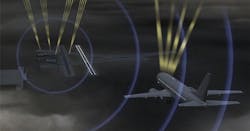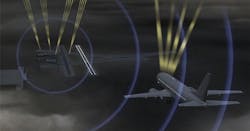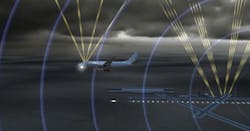Bush Intercontinental Airport, FAA, Honeywell, and United Airlines test Ground Based Augmentation System under NextGen ATM pilot program
HOUSTON, 26 April 2013. Houston’s George Bush Intercontinental Airport (IAH) demonstrated the use of Ground Based Augmentation System (GBAS) this week, under a NextGen air traffic management pilot program in partnership with the Federal Aviation Administration (FAA), United Airlines, and Honeywell.
On Monday, 22 April 2013, a United Airlines commercial passenger aircraft equipped with Honeywell’s SmartPath Ground Based Augmentation System (GBAS) performed the first precision approach at IAH.
IAH is one of two airports in the country participating in the pilot program with the Federal Aviation Administration (FAA). This new system delivers a cost-effective solution to increase airport capacity, decrease air traffic noise and reduce weather-related delays.
“The Houston Airports are among the most innovative and progressive in the nation when it comes to safety and efficiently connecting passengers to destinations around the world,” says Mario Diaz, director of the Houston Airports. “It is imperative that we continue to invest in new technology that enhances the aviation sector.”
Honeywell’s SmartPath GBAS system augments GPS signals so they can be used for precision navigation in the approach and landing phases of flight. The flexible approaches provided by GBAS may produce a significant reduction in aircraft delays and carbon emissions at airports. The project is a component of the Federal Aviation Administration (FAA) Next Generation Air Transportation System (NextGen).
“It's a migration from what is considered to be a ground-based air navigation system to a satellite-based navigation system which uses the same GPS that you use in your cars today,” explains a spokesperson.
United Airlines will operate the flights with a Boeing 737 aircraft equipped with global navigation satellite system (GNSS) landing system (GLS) technology to receive the GBAS landing approach data. United was an early leader in NextGen technology, taking delivery of GLS-equipped aircraft since 2009, according to a company representative.
“We believe that GBAS is the air carrier precision landing system of the future,” says Captain Joe Burns, United’s managing director of technology and flight test. “We continue to work closely with the FAA and our industry partners on GBAS and other NextGen initiatives.”
GBAS can provide aircraft with guidance to as low as 200 feet above the surface of the runway, referred to as a Category I approach.
The FAA is currently validating the requirements for a GBAS to support Category II and Category III precision approach operations which would guide an aircraft to the surface of the runway. GBAS represents the only currently feasible satellite-based navigation solution for Category II/III precision approach operations.


